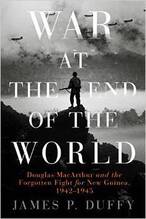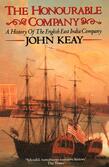|
I wanted to like this book. It is about a part of World War II I have studied little. It is written from an overview perspective, so one should be able to get a good understanding of the theatre. But it was a disaster.
From simple factual errors (p. 88 the Mitchell bomber has only TWO engines), to a clear misunderstanding of military units (p. 146 where the 7th Division is described as having only 2 battalions - a full division has between 6 and 12 battalions plus various other formations), to maps that have none of the locations mentioned in the text they are accompanying, to inconsistency from one paragraph to the next (pp. 101-2 where 75 bombers become 93, unless it was really 108, just a few paragraphs later) Duffy is all over the place. Unfortunately, he is no better with the people. He gives brief biographies of the players - leaders mostly but some common soldiers too - and they sound good, until they don't. One general is noted as having been commissioned in 1923 but only two pages later to have distinguished himself in World War One when he was but a teen, though no further mention is given. To round it out, Duffy's descriptions of terrain are also challenged. In one chapter he tells how the Allies decide to build three large airfields in a place which, just two pages before, he has described as having rough mountains marching to within a hundred meters of a mangrove jungle lined shore. Doesn't sound like any place for a large flat airfield! I'll continue to look for a good history of the Second World War in New Guinea. This is not it.
0 Comments
In The Honourable Company, John Keay takes a long hard look at the "Company of Adventurers Trading in the East Indies". His account is frank and direct, taking to task many of his predecessors and many of the myths of the mighty East India Company. He pulls into his narrative both the personalities of the Company in the "field", i.e. outside of London, from scattered attempts at settlement in South Africa, the Red Sea, and the Persian Gulf, to the much better known adventures on the Indian subcontinent. He also ties in the various ventures in Indonesia, the Malay Peninsula, and China and Japan. Against these personalities, their complex motivations, many of them less than stalwart, Keay also arranges the personalities in London in government and in the Company whose interests were often in opposition to those in the field, though the could also be of tremendous assistance. Finally, Keay brings into the story the many native rulers and the push and pull they exerted, often in opposition to their long-term self-interest.
Somehow, Keay is able to keep the reader on track, making sure we understand who the players are, where events are unfolding, and the various factors affecting the result. There is a lot of detail; the book is not for the casual reader or the faint-hearted. However, for one interested in how Britain became an Imperial Power almost in spite of itself, or how the decay of the Moghul Empire and the factions within the other native rulers both assisted and thwarted the Company, or how the Europeans engaged for over 200 years in violent conflict with each other in this area, despite peace in Europe, this is a fantastic read. |
AuthorMe as a critic (be careful! the harshness will be well concealed!) Archives
April 2024
Categories
All
|


 RSS Feed
RSS Feed